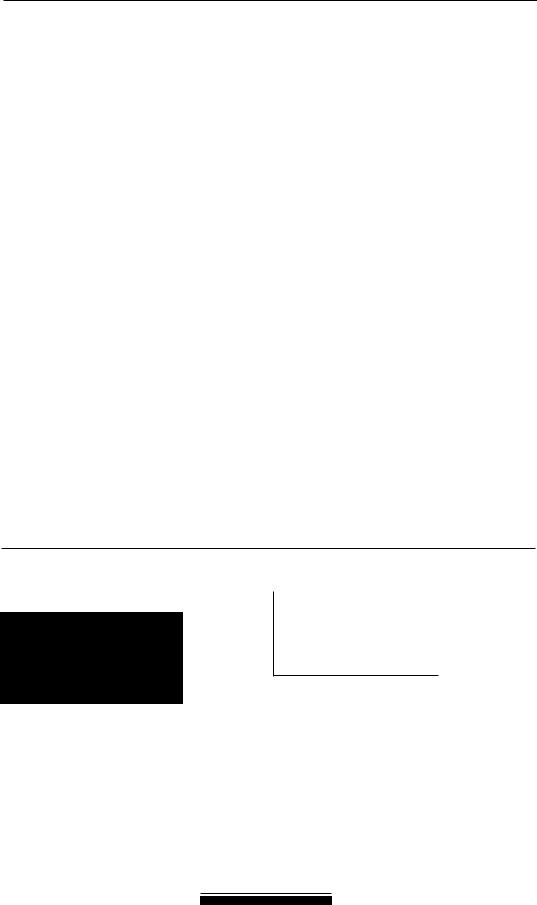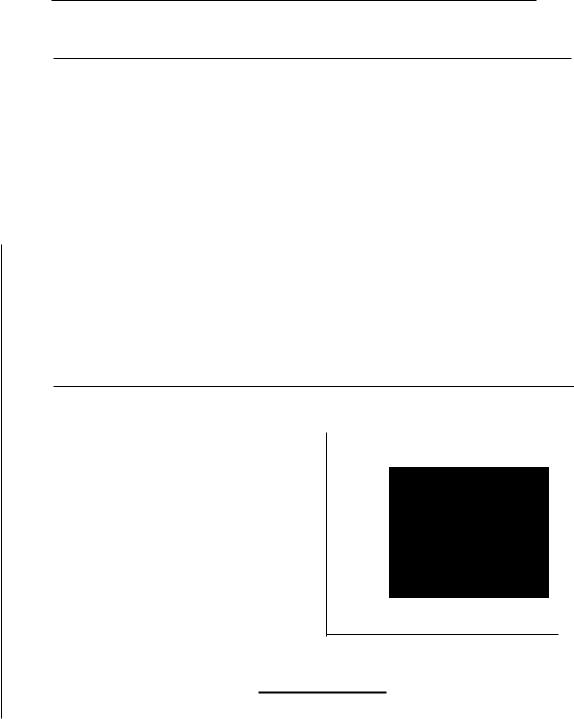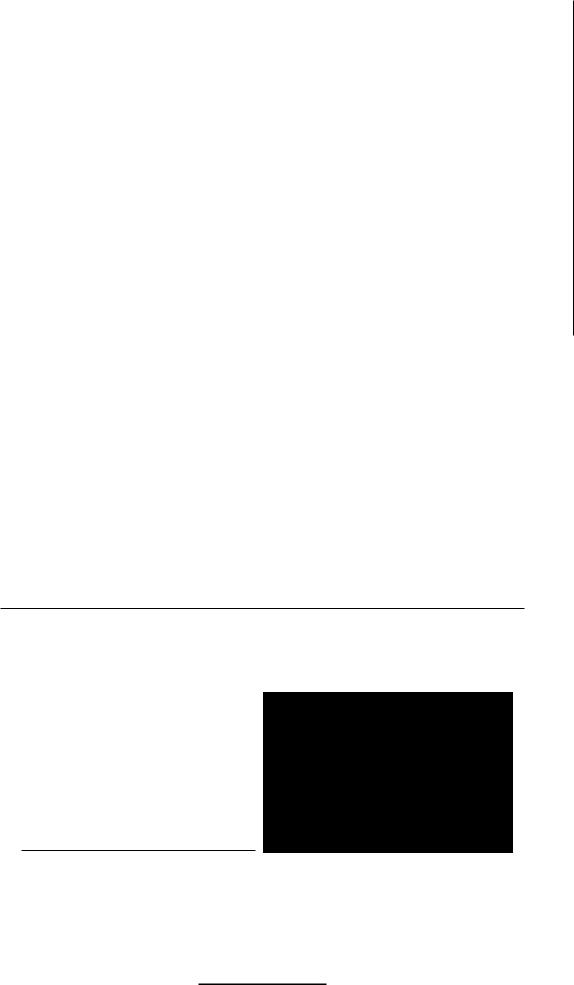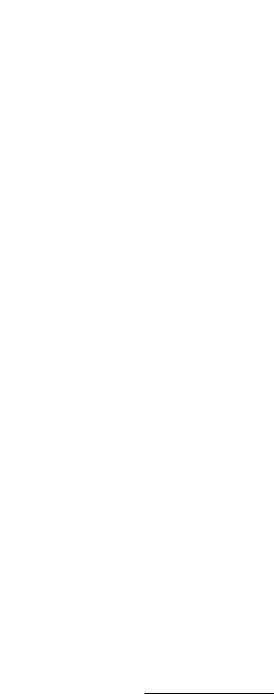
CFA Level 1 (2009) - 2
.pdf
Study Session 5 - Cross-Reference to CFA Institute Assigned Reading #18 - Perfect Competition
fixed costs, its loss will be less than its fixed (in the shorr run) costs. If the firm is only just covering its variable costs (P = AVC), the firm is operating at its shutdown point. If the firm is not covering its variable costs (P < AVC) by continuing to operate, its losses will be greater than its fixed costs. In this case, the firm will shut down (zero output) and layoff its workers. This will limit its losses to its fixed costs (e.g., its building lease and debt payments). If the firm does not believe price will ever exceed ATC in the future, going Out of business is the only way to eliminate fixed costs.
Figure 5: Short-Run Loss
Price
economic loss
~ |
|
MC |
|
|
ATC |
'" |
;/ |
AVC |
---- .. . |
__ ._.~:https://studfile.net// |
|
|
|
MR=P |
L - |
|
Quanriry |
The long·run equilibrium output level for perfectly competitive firms is where MR = MC = ATe, which is where ATC is at a minimum. At this output, economic profit is zero and only a normal return is realized.
LOS 18.c: Describe a perfectly competitive firm's short-run supply curve and expiain the impact of changes in demand, entry and exit of firms, and changes in plant size on the iong-run equilibrium.
Recall that price takers should produce where P = Me. Referring to Figure 6(a), a firm will shut down at a price below Pl'Between P J and P2 a firm will continue to operate in the shorr run. At P2 the firm is earning a normal profit-economic profit equals zero. At prices above P 2' a firm is making economic profits and will expand its production along the Me line. Thus, the short-run supply curve for a firm is its MC line above the average variable cost curve, AVe. The supply curve shown in Figure 6(b) is the shortrun market supply curve, which is the horizontal sum (add up the quantities from all firms at each price) of the MC curves for all firms in a given industry. Since firms will supply more units at higher prices, the short-run market supply curve slopes upward to the right.
©2008 Kaplan Schweser |
Pae:e 81 |

Study Session 5
Cross-Reference to CFA Institute Assigned Reading #18 - Perfect Competition
Figure 6: Short-Run Supply Curves
(a) Firm Supply |
(b) Market Supply |
Price |
Price |
|
SSHORT.RlJN |
, --------- Quantity
Changes in Demand, Entry and Exit, and Changes in Plant Size
In the shon run, :In incre;lsc in market demand (a shift of the marker demand curn' rl' the right) will increase hOlh C(luililHium priLl' and quanrin. whilc a decrease in I'I;1l1l'l demand will reduce borh equilihrium price and qU:lntit\,. The change in equilihnul1l price will change the (horiwntal) demand curve f<Ked hy each individu:ll firm and
the profit-maximizing output of a firm. These effects for an increase in demand are illustrated in Figure 7. An increase in markel demand from D j to D 2 increases d e shorr-run equilibrium price from f'1 to Jl 2 and equilibrium ourpur from Q1 to Q.:. in Figurc 7(b), we sec the shorr-run effect of the increased market price on the OurpJl of
an individual firm. The higher price leads to :l greater profit-maximizing outpUt, (l'::l:"".' At the higher outpUt level. a firm will earn an economic profit in the shorr run. II' response to the increase in demand in the long run, some firms will increase their scale
of operations, and new firms will likely enrer the industry, In response (() a decre;lse in
demand, the shorr-run equilibrium price and quantity will fall, and firms will decrease their scale of operations or exit the market in the long run,
Figure 7: Short-Run Adjustment to an Increase in Demand
Under Perfect Competition
(a) Market |
|
|
(b) |
Firm |
||
PriCl~ |
|
Price |
|
|
|
|
|
SR Indusrrv |
|
|
|
|
|
|
SupplY |
|
|
!vIC = SR firm Supplv |
||
|
|
P2 |
f ------- ,? ----- D, |
|||
|
|
P'I |
|
|
D. |
|
|
D, |
|
IL - |
|
|
|
|
|
|
|
Quantin' |
||
----~--'------ Ql.lantif)' |
|
~_~ |
|
|||
Q, |
Q, |
|
|
Ql Firm ~ Firm |
||
A firm's long-run adjustment to a shift in industry demand and the resulting change in price may be either to alter the size of its plant or leave the market entirely. The marketplace abounds with examples of firms that have increased their plant sizes (or added additional production facilities) to increase output in response to increasing
market demand. Other firms, such as Ford and GM, have decreased plant size to reduce economic losses, This strategy is commonly referred to as downsizing.
Page 82

Study Session 5
Cross-Reference to CFA Institute Assigned Reading #18 - Perfect Competition
If an industry is characterized by firms earning economic profits, new firms will enter the market. This will cause industry supply to increase (the industry supply curve shifts downward and to the right), increasing equilibrium Output and decreasing equilibrium price. Even though industry output increases, however, individual firms will produce less because as price falls, each individual firm will move down its own supply curve. The end result is that a firm's total revenue and economic profit will decrease.
If firms in an industry are experiencing economic losses, some of these firms will exit the market. This will decrease industry supply and increase equilibrium price. Each remaining firm in the industry will move up its individual supply curve and increase production at the higher market price. This will cause total revenues to increase, reducing any economic losses the remaining firms had been experiencing.
LOS 18.d: Discuss how a permanent change in demand or changes in technology affect price, output, and economic profit.
A permanent change ill demalld leads to the entry of firms to or exit of firms from an
industry. Let's consider the permanent increase in demand illustrated in Figure 8. The initial long-run industry equilibrium condition shown in Figure 8(a) is at the
intersection of demand curve Do and supply curve So' at price Po and quantity ~. As indicated in Figure 8(b), at the market price of Po each firm will produce qO" At this price and output, each firm earns a normal profit, and economic profit is zero. That is, \1C '" MR = P and ATe is at its minimum. N~w. suppose industry demand permanently increases such that the industry demand curve in Figure 8(a) shifts to DI'The new market price will be PI and ind ustry output will increase to QJ' At the new price P J' existing firms will produce q1 and realize an economic profit since PI> ATe. Positive economic profits will cause new firms to enter the market. As these new firms increase total industry supply, the industry supply curve will gradually shift to 51'and the market price will decline back to Po' At the market price of Po' the industry will now produce Q2' with an increased number of firms in the industry, each producing at the original quantity, qo, The individual firms will no longer enjoy an economic profit since ATC =
Po at qo'
Figure 8: Effects of a Permanent Increase in Demand
(a) Industry |
(b) Firm |
Price |
Price and Cmf |
MC
PI f---- |
~:---~-- |
+__r-- |
Po 1 ----- |
__-=--- |
.""""'-,- _ MRo |
Quantity |
Quantity |
©2008 Kaplan Schweser |
Page 83 |

udy Session 5
ass-Reference to CPA Institute Assigned Reading #18 - Perfect Competition
The long-run equilibrium price after a permanent increase in demand may be higher or lower than before, depending on the effect of greater input purchases on input prices. In a situation referred to as external economies of scale, input prices fall because of the greater demand. As computer demand increased, economies of scale in producing the central processing units allowed computer makers to decrease prices, even as output
increased. This effect was compounded by technological improvements in manufacturing technology. The long-run supply curve for the industry is downward sloping when external economies of scale reduce production COStS for larger quantities.
External diseconomies of scale refer to a situation when the increased demand for productive inputs results in an increase in their prices. In this case, a permanent increase in market demand for the finished product will result in an increase in both equilibrium price and output. A permanent increase in the market demand for aluminum will increase the long-run equilibrium price and output of aluminum since the supply
curve for bauxite (aluminum ore) is upward sloping. The long-run supply curve for the industry is upward sloping when external diseconomies of scale increase production costS as industry output expands.
In sum, rhe slope of the long-run industry supply curve depends on the effecr of increased industry output on the prices of the important inputs in the production process. The twO cases are illustrated in Figure 9. The initial price change in response to an increase in industry demand, from Do to OJ' is movement along the short-run supply curve (SRS o) to a higher price in the shorr run (PSR)' In the long run as producers enter rhe industry, short-run industry supply increases to SRS 1 and (he shape of the long-
run industry supply curve (LRS) depends on whether productive inputs are subject to economies or diseconomies of scale. With external economies (diseconomies) of scale, the long-run effect of a permanent increase in demand is an increase in output and a decrease (increase) in the equilibrium market price to PLR'
Figure 9: Long-Run Industry Supply in a Competitive Market
(a) External Economies of Scale |
(b) External Diseconomies of Scale |
Price |
Price |
LRS
Quantity |
Quantity |
: 84 |
©2008 Kaplan Schweser |

Study Session 5
Cross-Reference to CFA Institute Assigned Reading # 18 - Perfect Competition
TechnoLogicaL changes, such as a lower-cost production process, usually require firms to invest in additional fixed assets (e.g., plant and equipment). Consequently, technological advances take some time to become common practice throughout an industry. Once individual firms have implemented technological changes, their costs decline and their supply (cost) curve shifts to the right. At the lower costs, firms are willing to supply a given quantity at a reduced price, or provide more of a product at a higher price. In either case, the lower cost structure for the individual firms shifts the industry supply curve to the right. With a given demand, and this repositioned industry supply curve, the industry supplies more of a given product at a lower price.
Firms that are the first to adopt the new cost-reducing technology will earn economic profits. New firms that use the new technology will be attracted to the industry by profits. Existing firms using the older (higher-cost) technology will experience economic losses and be forced to either adopt the new technology or exit the industry. Long-run equilibrium with price equal to minimum average total cost for the new technology will be established after all firms in the industry have adopted the new technologv. In longrun equilibrium. firms again will earn zero economic profits as the number of firms in the industrv will be the number for which IOral industnsupph' makes equilibrium pricl' equal to minimum ~l\'crage roral cosr (and marginal cost) for each firm.
©2008 Kaplan Schweser |
Page 85 |

Study Session 5
Cross-Reference to CFA Institute Assigned Reading #18 - Perfect Competition
KEy CONCEPTS
LOS 18.a
Conditions of perfectly competitive markets:
•All the firms in the market produce a homogeneous product.
•There is a large number of independent firms.
•Each seller is small relative to the total market.
•There are no barriers to entry or exit.
Price takers are firms that take the market price as given. In a perfectly competitive market, each producer is a price taker because production decisions cannot influence the market price.
Although the market demand curve is downward sloping, under pl:rfect competjtion each firm LlCl:S a perfecrly elastic (horiw1Hal) demand curve and therd-ore its marginal revenue ar am' outpUt level l'quals [he marker price.
LOS 18.h
Firms maximize profits by producing the quantitv for which marginal revenue equals margil1JI cost. Because marginal revenue for a price-taker firm is equal ro [he market price. price-taker firms maximize profits ar ell<:'OutpUl IeI'd for which the marginal COSt equals rhe market price.
Economic profit or loss equals total revenues less the opportunity cOSt (implicit and explicit costs) of production. which includes a normal profit. Economic profit is zero in the long run for a firm in a perfectly competitive market.
A price-taker firm should continue to operate if the market price is temporarily less than its average total cost but greater than its average variable COSt, but the firm should shut down temporarily if price is less than average variable cost. A firm that believes price will always he less than average total cOst should go out of business.
LOS 18.c
The short-run supply curve for a perfectly competitive firm is the segment of its marginal COSt curve that lies above its average variable cost curve.
An increase (decrease) in market demand will increase (decrease) market price and Output as individual firms increase (decrease) outpU[ and firms enter (exit) the industry in response (0 the change in market price, which is also marginal revenue.
In the long run, firms will adjust their scale of operations (plant size) in response to changes in market price in order to minimize average (Otal cost at their new profit maximizing level of output.
Page 86 |
©2008 Kaplan Schweser |

Study Session 5
Cross-Reference to CFA Institute Assigned Reading #18 - Perfect Competition
LOS 18.d
In a perfectly competitive market, a permanent increase (decrease) in market demand and market price leads to an increase (decrease) in the number of firms operating, as new firms enter when existing firms are earning economic profits (some firms exit when existing firms are experiencing economic losses).
Firms that are among the first to adopt new cost-saving technology will expand OUtput and earn economic profits for a period of time. \X/hen all industry firms have adopted the new technology, industry supply and equilibrium quantit)r will both be greater. Equilibrium price will be lower and will again be equal to both marginal cost and minimum average total cost for each firm, so economic profit returns to zero in elluilibrium.
©2008 Kaplan Schweser |
Page 87 |

Study Session 5
Cross-Reference to CFA Institute Assigned Reading #18 - Perfect Competition
CONCEPT CHECKERS
1.A firm operating under conditions of pure competition will:
A.face a vertical demand curve.
B.generate zero economic profit in the long run.
e. produce a quantity where marginal revenue is Jess than marginal cost.
2.Under pure competition, a firm will experience economic losses when:
A.price is less than ATe.
B.MC is less than ATe.
e. MC = ATC = MR = price.
3.A price-taker firm will increase output as long as:
A.marginal revenue is positive.
B.marginal revenue is greater than marginal cost.
C.marginal revenue is greater than the average cost.
4.~!hich of these statemems is most accurate regarding the characteristics of a perfecdy competitive market?
A.Firms' produces are different.
B.The competitors never earn economic profits.
C.Barriers to emr\" into the market are nonexistent.
5.Under perfect competition, the long-run equilibrium condition for a firm may be described as:
A.P = ATC = TR.
B.MC = TR = Te. e. P = MC = ATe.
6.When a firm operates under conditions of pure competition, marginal revenue always equals:
A.price.
B.average fixed cost.
C.average variable cost.
7.A firm is likely to continue production in the short run as long as price is at least equal to:
A.marginal cost.
B.average total cost.
e. average variable cost.
8.A purely competitive firm will tend to expand its Output so long as:
A.its marginal revenue is positive.
B.the marginal revenue is greater than price.
e. the market price is greater than marginal cost.
9.The demand for the product of a purely competitive firm is:
A.perfecdy elastic.
B.perfecdy inelastic.
e. greater than zero but less than one.
Page 88 |
©2008 Kaplan Schweser |

Srudy Session 5
_ Cross-Reference to CFA Institute Assigned Reading #18 - Perfect Competition
10.In a purely competitive market, economic losses indicate that:
A.price is below average cotal costs.
B.collusion is occurring in the market place. C. firms need co expand output co reduce costs.
©2008 Kaplan Schweser |
Page 89 |

Study Session 5
Cross-Reference to CFA Institute Assigned Reading #18 - Perfect Competition
ANSWERS - CONCEPT CHECKERS
1.B A firm operaring under condirions of pure comperirion will generare z.ero economic
profir in rhe long run. In rhe shorr run, firms may gcnerare economic pro firs. However, because of rhe lack of enrry barriers, new comperirors will enrer rhe marker and prices will adjusr downward uIHil economic profirs disappear.
2.A Under pure comperirion, a firm will experience losses when irs selling price is less rhan average roral cosr. The orher possible answers will not necessarily resulr in losses.
3, |
B |
A firm will increase ourpur, as long as MR > Me. |
|
|
|
ProfisslJl';' NOle: DOIl'tfoIKei Ibtll economic profil is Ibefirllls IOlal reuenlles In' |
|
|
|
ils 0pp0l'lllllirl' COSI, |
|
'I, |
C |
ThL' on,," rruc Sl.H,'mCIlI li\lnl in rill Ljuesllon i, tll.ll, und·~r purt' cunl!,L'lilion, rherL' |
|
|
|
,lrL' no harriers to ,'Ill!"' inlo lhc markn, "ComperilOr, nn'cr earn e-:Ollomk protir,;" i" |
|
|
|
illcorrect becausc prlcc-raker hrms on earn posiri"c ecollomic prol1r, in lhe short run, |
|
'i, |
C |
t:or a comperjrin: J1rm. long.-run equilibrium is ",here I'= I'vIC = ATe:. For price-rakn |
|
|
|
hrms, I'= MR, Coml't'lirion eliminates economic profits in rhe long. run <in rhal T' = |
|
|
|
ATe |
|
0, |
A |
\'\lhen a firm operJ~~S under condirions of pure comperirion, MR always cquJls prict:. |
|
|
|
This is hecause, in [dlrC comperirion. demand is perfecrl\' elasric (;J horiz.onral |
line) so |
|
|
I'vlR is consraIH and equal ro price, |
|
7 |
C |
If price is grearer rhan average variable cost, a firm will conrinue lO operare in |
rhe short |
|
|
run since it is covering ar leasr some of irs fixed cosrs. |
|
8.C A purely comperirive firm will rend ro expand irs ourpur so long as rhe marker price is
grearer than Me. In rhe shorr rerm and long rerm, profir is maximiz.ed when P = Me.
9, A The demand for the product of;J purel:' comperirive firm is perfenly clastic. This is rrlle because the market diu;Jtes prict', If a price raker incre;Jses irs price ahove rht, m;Jrket price, the firm will sell no units.
10, A In a purely competirive m;Jrkcl. economic losses indic;Jre that firms are overproducing, causing prices ro fall below average lor;J1 cosrs, This can occur in the short run. In rhe long run, however. market supply will decrease as firms exit the industry. and prices will rise [(l rhe poinr where economic profirs ;Jre zero,
Page 90 |
©2008 Kaplan Schweser |
